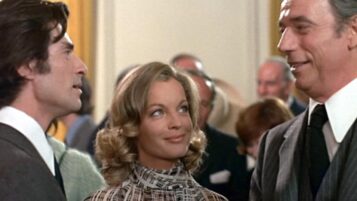Jul 23 2023
How Moviemakers Schedule Shoots
For all the scheduling experts who have been wondering how moviemakers schedule shoots, the current exhibition about the late German-French film actress Romy Schneider at the film festival palace in Cannes provides two examples from director Claude Sautet:
- Les Choses de la Vie (“The Things of Life”, 1970), later remade in the US as Intersection.
- César et Rosalie (“Cesar and Rosalie”, 1972)
Contents
The Shooting Schedule for César et Rosalie
The exhibits include the original documents, which are manually generated spreadsheets, and reasonably self-explanatory. This is the schedule for César et Rosalie, followed by my comments:

The shooting schedule for Les Choses de la Vie is in exactly the same format. This reminds us that, while each movie is a unique work of art, moviemaking is an industry that relies on repetitive work patterns.
Explanations
Looking closely, we can identify many features:
- The location information is in the Decors bar. They shot scenes from multiple parts of the movie on the same day if they use the same location.
- Each day has 1 column, and they highlighted National holidays in dark blue.
- Each part and actor has 1 row.
- They numbered all the scenes and, if actor X is in scene n on day D, then n appears at the intersection of the row for X and the column for D, and they highlighted in red the cells for the stars, Romy Schneider, Yves Montand, and Sami Frey.
- The vertical red bars at the bottom cover the list of scene numbers scheduled for that day, with the white gaps presumably showing scenes that they failed to shoot on schedule.
Remaining Mysteries
There are many other color codes and annotations that are not so obvious, and there is no accompanying legend. Also, this schedule does not show the support staff dealing with sets, props, costumes, cameras, etc., but we can assume that they could organize their own schedules based on knowing which scenes were shot when, where, and with which actors.
From 1972 to 2022
This kind of use of paper spreadsheets inspired the development of the electronic version over a decade later. Looking back, it would be interesting to compare Claude Sautet’s 1972 schedule with, say, Christopher Nolan’s schedule for Oppenheimer. While Sautet worked around locations, according to a British tabloid, Nolan worked around star Cillian Murphy’s hairdos.

How Moviemakers Schedule Shoots | Lean Office .org
July 23, 2023 @ 8:30 am
[…] post How Moviemakers Schedule Shoots appeared first on Michel Baudin's […]